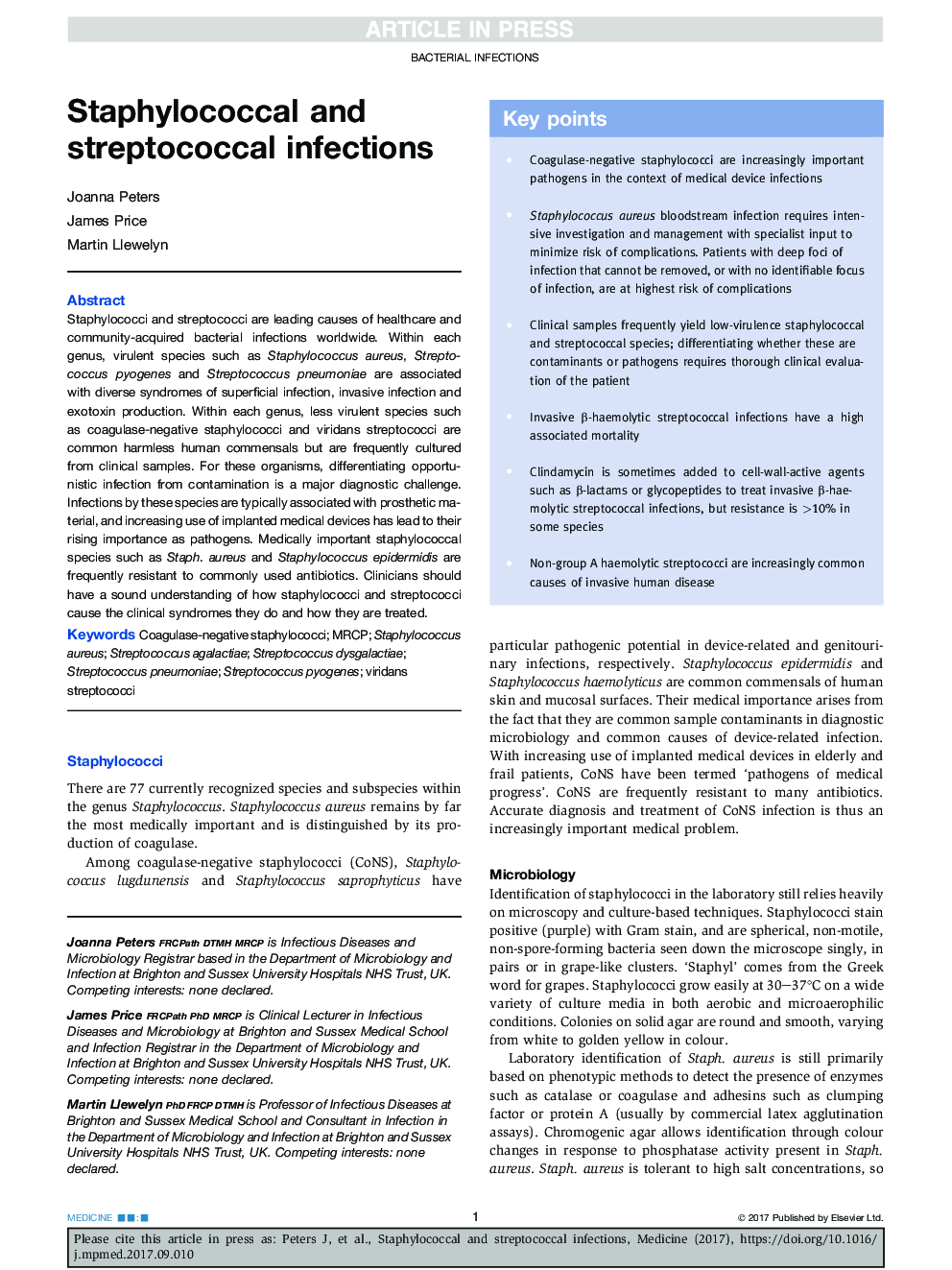| Article ID | Journal | Published Year | Pages | File Type |
|---|---|---|---|---|
| 8764123 | Medicine | 2017 | 8 Pages |
Abstract
Staphylococci and streptococci are leading causes of healthcare and community-acquired bacterial infections worldwide. Within each genus, virulent species such as Staphylococcus aureus, Streptococcus pyogenes and Streptococcus pneumoniae are associated with diverse syndromes of superficial infection, invasive infection and exotoxin production. Within each genus, less virulent species such as coagulase-negative staphylococci and viridans streptococci are common harmless human commensals but are frequently cultured from clinical samples. For these organisms, differentiating opportunistic infection from contamination is a major diagnostic challenge. Infections by these species are typically associated with prosthetic material, and increasing use of implanted medical devices has lead to their rising importance as pathogens. Medically important staphylococcal species such as Staph. aureus and Staphylococcus epidermidis are frequently resistant to commonly used antibiotics. Clinicians should have a sound understanding of how staphylococci and streptococci cause the clinical syndromes they do and how they are treated.
Keywords
Related Topics
Health Sciences
Medicine and Dentistry
Medicine and Dentistry (General)
Authors
Joanna Peters, James Price, Martin Llewelyn,
